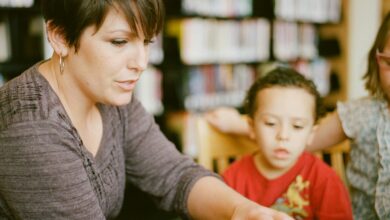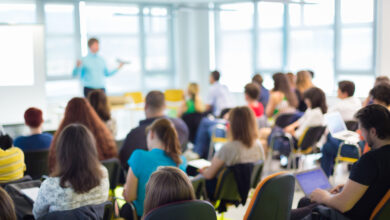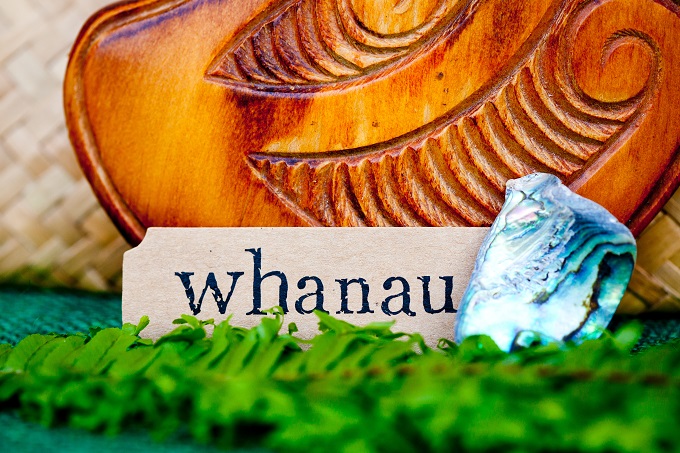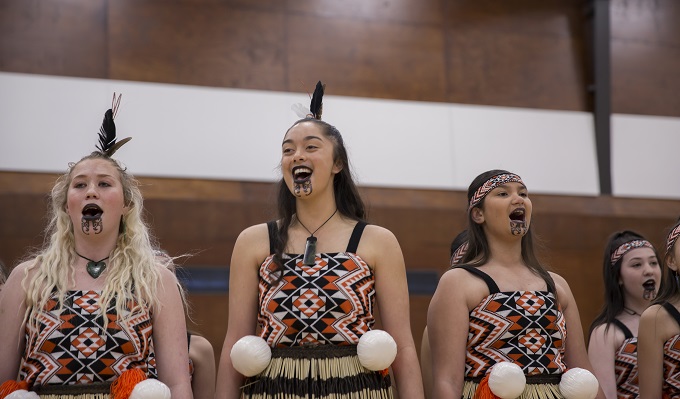Benefits for non-Māori students: Kapa haka in mainstream schools
Tēnā koutou katoa. He uri nō Koterana e mihi nei. Ko Benechie te maunga. Ko Dee te awa. Ko North te moana. Engari, he Māori āku tamariki, nō Ngāti Awa. Aku taura here ki te kaupapa o te reo Māori me te mātauranga Māori ko rātou ko āku mokopuna. Ko Alice Patrick tōku ingoa.

Kapa haka provides an avenue for Māori students to access the Māori world and be culturally-connected learners.
It also provides them with a platform for expression, giving them the opportunity to experience success, gain confidence through performance, and step up as leaders and role models. Through kapa haka, Māori students are able to experience a holistic way of learning – which is conducive to a sense of well-being (hauora).
There are the physical demands requiring stamina, coordination and manipulation of props e.g. poi (te tinana/the body); the cognitive aspect of learning and memorising language (te hinengaro/the mind); the social aspect of coming together (whanaungatanga/relationships) and performing as one (mahi tahi/cooperating); and the spiritual dimension inherent in many waiata and haka (te wairua/the spirit).
Benefits for non-Māori students
It’s not just Māori students who benefit from kapa haka. Potentially all New Zealand children can benefit because kapa haka provides a conduit to appreciate the unique role of Māori in shaping the New Zealand identity. This is the reason for the visibility of kapa haka at public events overseas, where Māori excellence is show-cased and Māori culture is proudly shared with the world, as part of the branding of Aotearoa New Zealand – to establish meaningful connections with other nations and peoples.
A quote from a respondent in research conducted by the Ministry for Culture and Heritage highlights the positivity associated with primary school students’ participation in kapa haka:
“I am pleased to see so many of our children at primary school learning to do the poi or symbolic kind of haka or something [in] mainstream. I’m really thrilled about that because even though it is really tokenistic at this stage, somehow it embeds an interest, hopefully, or an acknowledgement, or there’s an essence that becomes integrated into that person’s wellbeing.”
Through kapa haka in schools, non-Māori students can learn new words and phrases, while developing an appreciation of how Māori express their values. The fact that the students participate as part of a safe, inclusive group helps to reduce individual anxiety and stress. Moreover, kapa haka cognitively challenges them while teaching them about exercising perseverance and self-discipline – through continued recitation, repetition and memorisation.
Furthermore, they don’t need to have a good singing voice; the group will carry them. Nor do they need to be superbly coordinated; there is a place for everyone – because of the tuakana (older/more experienced):teina (younger/less experienced) approach to learning.
Finally, like their Māori peers, non-Māori students gain confidence from the act of ‘performance’ – which they can carry over to other aspects of their lives.
Implications for schools and teachers
The Education Review Office (2011) outlined three main characteristics of schools where the Treaty principle was evident. The first of these is particularly relevant here; namely, that te reo Māori and tikanga are valued and promoted in the school, e.g. through pōwhiri, karakia, and kapa haka.
Creating opportunities for kapa haka is one way that schools can increase their cultural responsiveness to Māori students. It is also a way for teachers to demonstrate some of the cultural competencies in Tātaiako, the Education Council resource that sets out the five cultural competencies needed by teachers to help Māori learners achieve educationally.
Four of these competencies are particularly relevant to kapa haka:
Manaakitanga (showing respect for Māori beliefs, language and culture); Tangata Whenuatanga (affirming Māori students as Māori – and providing contexts for learning where their language, identity and culture are affirmed); Whanaungatanga (actively engaging in respectful relationships with Mäori learners); and Ako (demonstrating reciprocal teaching and learning).
Teachers who are open to participating in kapa haka alongside their students are successfully enacting the latter competency ‘ako’. The reality is that, in many cases, the teacher will be less experienced as a kapa haka performer, in the position of being a ‘teina’ (less experienced), learning from some of the students. As such, the traditional power dynamic of the classroom is completely altered – and the teacher becomes a learner.
The challenge is for teachers to transfer to the classroom the learnings from kapa haka – in terms of creating a culturally-responsive learning environment where Māori language and culture is validated, and Māori students can learn as Māori.
Personal reflection
In my experience working as a Māori language adviser in mainstream schools, I see kapa haka being a non-threatening way for students and teachers to learn about Māori language and culture – provided that the meaning and background of the waiata/haka are understood.
Unfortunately, there are times when I have observed students parroting Māori words with no idea of what they mean, nor the story behind them. A good example is the haka ‘Ka Mate’.
As for my personal experience as a Pākehā involved with kapa haka over many decades, it’s been extremely positive. Kapa haka uplifts the spirit; and it’s fun being part of a group. At the end of each practice, I feel energised and exuberant.
Moreover, I know that I have been cognitively challenged – having had to remember the words of multiple verses, complicated actions, and unfamiliar tunes. This (I’m hoping) will help to stave off dementia in old age!
Interestingly, there is research from Auckland University that suggests participation in kapa haka may help older people to mitigate the risk of dementia – despite facing other disparities and negative health outcomes. The researchers found that kapa haka kept old people’s minds engaged by providing greater cognitive stimulation in their advancing years, which preserved brain function.
My younger son Hone, who lives in Hong Kong, takes pride in belonging to the Māori cultural group there. It enables him to maintain his connection with home – and with te reo Māori me ōna tikanga (Maori language and culture). It also allows him and other young Māori living there to reconnect each week, in the interests of whakawhanaungatanga.
For them, kapa haka has become their ‘whānau’, providing a sense of belonging. This is important for diaspora living in an individualistic and competitive society like Hong Kong. At kapa haka, they are reminded that the group is more important than the individual.
Also important is that their weekly kapa haka sessions provide a platform for their tamariki (children) to be exposed to Māori language and culture, albeit informally and by osmosis.
In Hone’s words:
“Kapa haka in Hong Kong provides that connection to home and allows my children to begin to understand and appreciate where they are from.
“It has never just been about ‘performance’ for us; it has always been about whakawhanaungatanga, miles away from home in a foreign land.
“And for those who were not brought up in a Māori setting, it is a safe space to learn – or simply be part of the familiar sounds of home.
“When we started performing at New Zealand events in Hong Kong, we didn’t fully anticipate the feelings that would be stirred up in our audiences, i.e. homesick Kiwis who became emotional and more appreciative of their tūrangawaewae [place of belong]. We knew then that this was more than a cultural performance group.”
Kapa haka contributes to the revitalisation and promotion of te reo and tikanga Māori. It is a particularly useful and positive vehicle for Māori students to express themselves and experience success as Māori, as a springboard for success in other areas.
Additional benefits of kapa haka, for all, include:
- affirming our unique identity as New Zealanders
- being exposed to Māori values (e.g. whanaungatanga, ako, tuakana:teina)
- gaining confidence through ‘performance’
- contributing to our holistic well-being (hauora)
- learning how to communicate meaning using visual language, e.g., action songs and haka
- developing physical stamina, fitness and coordination
- being cognitively challenged due to the demands associated with recitation, repetition and memorisation
- being part of a team and gaining strength from being in a collective
- demonstrating discipline and commitment
- facilitating opportunities for leadership through a tuakana:teina approach
- promoting personal growth and development.










I always love reading what you have to say Alice.
You are a great inspiration to many of us!
Ngā Mihi,
Michele
Awesome read Alice,
We are currently integrating AR Technologies into the educational curriculum alongside one of the Kura Kaupapa in Auckland which in part is being used to preserve and revitalise Te Ao Maori, the Kura history, whakatauki, values, kapa items and learnings/teachings. Allowing tauira to express and demonstrate with visual advanced technologies which in turn enables them to become the teachers of understanding valuable timeless knowledge through their own lens.
Nga mihi,
Tama Emery
Community Access Group
Earth Tech Triangulation Hub (ETH)